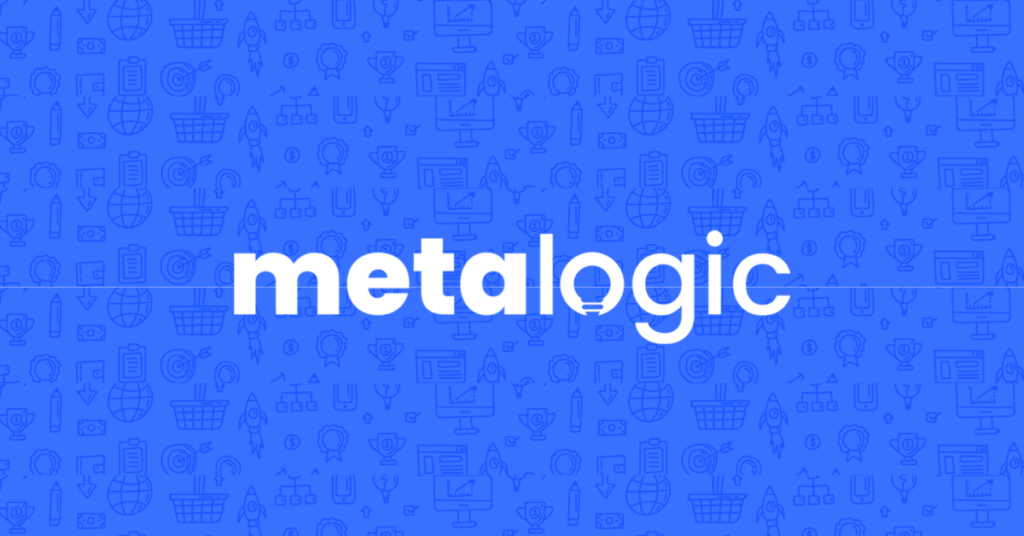Google Ads Ad Schedule

Nick Czerwinski
PPC & Local SEO Specialist
Your Google Ads Ad Schedule, often referred to as dayparting, empowers advertisers to take control of when their ads are displayed, allowing for precise timing to reach the right people at the right time. In this comprehensive guide, we’ll explore the intricacies of Google Ads Ad Scheduling, from its significance in digital advertising to practical strategies for implementation and the tools at your disposal to achieve perfect timing.
The Significance of Your Google Ads Ad Schedule
Imagine running a restaurant and promoting your dinner specials at breakfast. It’s unlikely to yield great results because people have different needs and preferences throughout the day. The same principle applies to online advertising. Understanding when your Google Ads audiences are most active and when they are most likely to convert is crucial.
Google Ads Ad Scheduling allows you to harness the power of timing to your advantage. You can specify the days and hours when your ads are active, ensuring that your message reaches potential customers when they’re actively searching for products or services like yours.
Aligning Campaign Goals with Google Ads Ad Schedule
Effective ad scheduling begins with understanding your audience. Different groups of people have distinct online behavior patterns. Are your target customers early birds who shop in the morning, night owls who browse late at night, or office workers who search during lunch breaks? By aligning your ad schedule with their habits, you can increase the chances of capturing their attention.
Your ad scheduling strategy should align with your Google Ads campaign types and objectives. If you’re running a branding campaign, you might want your ads to run consistently throughout the day to maintain visibility. In contrast, if your goal is to generate leads, you might find that certain hours or days are more effective for driving inquiries or conversions.
Utilizing Campaign Data for Optimizing Ad Scheduling
Data is your best friend when it comes to ad scheduling. Historical campaign performance data can provide invaluable insights into when your ads perform best. Are there specific days or times when you see spikes in conversions or click-through rates? Analyzing these patterns can help you make data-driven decisions when setting up your ad schedule.
Effective Strategies for Google Ads Ad Schedule Optimization
Now that we’ve explored the significance of timing in your Google Ads campaigns, it’s time to dive into the strategies and techniques for implementing effective ad scheduling. The key to success lies in understanding your audience, utilizing data, and aligning your scheduling strategy with your campaign goals.
Understanding the Basics of Google Ads Scheduling
The first step in mastering ad scheduling is understanding how to set it up. Within your Google Ads campaign, navigate to the settings tab, and click on “Ad Schedule.” Here, you can specify the days and hours when your ads should be active. You can choose to set up different schedules for specific campaigns or apply a shared schedule to multiple campaigns.
Enhancing Ad Performance with Dayparting Strategies
Dayparting, the practice of segmenting the day into different time blocks, allows you to tailor your ad scheduling more precisely. Consider the following dayparting strategies:
- Time Block Bid Adjustments: Analyze your data to identify peak performance hours and allocate higher bids during those times to increase visibility and competitiveness.
- Custom Ad Copy: Craft ad copy that is specific to different times of the day. For example, you can highlight lunch specials during lunchtime or evening discounts after office hours. (Learn how to write Google Ads headlines and ad copy).
Promotions and Offers: Schedule your ads to coincide with special promotions or offers. This can be particularly effective for time-sensitive deals.
Managing Ad Scheduling Across Various Time Zones
If your target audience spans multiple time zones, it’s essential to set up ad schedules that account for these variations. Consider using location targeting and creating separate campaigns or ad groups for different regions to ensure your ads display at the right times for each audience.
Honestly, I consider him part of my Team as well, he really cares about our success. As we grow, he will grow with us. I’m excited about the journey and future with Mike and his Team at Metalogic! If you’re looking at Internet Marketing for your business, simply put he’s the best!

Chris Chustz
Owner, Family First Mortgage
Implementing Seasonal and Event-Based Google Ads Scheduling
Ad scheduling is a valuable tool for capitalizing on seasonal trends or special events. Plan your campaigns ahead of time to coincide with holidays, shopping seasons, or local events that are relevant to your business. Adjust your schedules accordingly to make the most of these opportunities.
Successful ad scheduling goes beyond just setting specific hours for your ads to run. It involves tailoring your strategy to align with your Google Ads bidding strategies, audience behavior, campaign objectives, and even external factors that influence online activity.
How to Access and Optimize Your Google Ads Ad Schedule
Sign Into Your Google Ads Account
To get started, log in to your Google Ads account. If you don’t have one, you can create an account by visiting the Google Ads website and following the sign-up process.
Access Your Campaign Settings
Once you’re logged in, navigate to the campaign for which you want to set up ad scheduling. Click on “Campaigns” in the left-hand menu, and then click on the name of the campaign you wish to work on.
Enter The Campaign Settings
Within your chosen campaign, click on the “Settings” tab to access your campaign settings.
Access Ad Schedule
Scroll down the campaign settings page until you find the “Ad Schedule” section. Click on “Ad Schedule” to start configuring your ad schedule.
Set The Ad Schedule
Here, you’ll see a grid displaying the days of the week and the hours of the day. To set your ad schedule, follow these steps:
Select the Campaign’s Start and End Date: If you want your ad schedule to run only during specific date ranges, set the start and end dates accordingly.
- Choose the Days of the Week: Select the days of the week when you want your ads to appear. For example, if you run a local business and are closed on Sundays, you can exclude Sundays from your schedule.
- Define the Hours: Click on the hours within each selected day to specify when your ads should be active. For instance, you might choose to run your ads from 9:00 AM to 5:00 PM on weekdays and from 10:00 AM to 3:00 PM on Saturdays.
Bid Adjustments and Ad Copy
Consider whether you want to adjust your bids or create custom ad copy for specific time blocks. This step allows you to optimize your ad schedule further. For example:
Bid Adjustments: You can adjust your bids for specific hours or days to increase or decrease competitiveness during those times. To do this, click on the “Bid Adjustment” column and enter the desired percentage adjustment.
Custom Ad Copy: Learn how to write Google Ads headlines and craft ad copy that is specific to different times of the day or week. For instance, you can highlight special promotions during peak hours.
Save Your Ad Schedule
After configuring your ad schedule, click the “Save” or “Apply” button to save your changes.
Custom Marketing Plans Starting at $500 / month
Essential Tools and Tips for Successful Google Ads Scheduling
Effective ad scheduling in Google Ads requires not only a strategic approach but also the utilization of tools and techniques that help you make data-driven decisions and optimize your campaigns for the best results. Here are some of the tools and tips you can use to help nail your ad scheduling down.
Automated Bidding Strategies
Google Ads offers automated bidding strategies, such as Target CPA (Cost-Per-Acquisition) and Target ROAS (Return on Ad Spend), which can complement your ad scheduling efforts. These strategies use machine learning to adjust bids in real-time based on historical data and user behavior. By aligning your ad schedules with these automated strategies, you can maximize conversions or revenue during specific hours or days.
Ad Schedule Bid Adjustments
Google Ads bid adjustments allow you to fine-tune your bids for specific days, times, or devices. For example, you can increase bids by a certain percentage during your peak performance hours and lower them during less active times. This strategy ensures that your ads remain competitive when it matters most.
Ad Schedule Experiments
Running ad schedule experiments can help you test different scheduling strategies without affecting your live campaigns. Google Ads experiments provide the option to split your campaign’s traffic between the original schedule and a new schedule you want to test. By measuring the performance of both schedules, you can determine which one works best for your objectives.
Continuous Monitoring and Optimization
Ad scheduling isn’t a set-it-and-forget-it task. Regularly review your ad schedule’s performance data. Look for trends, anomalies, or shifts in user behavior that may necessitate adjustments. Fine-tune your schedules based on the insights you gather and strive for ongoing optimization.
Bid Adjustments for Mobile Devices
Consider implementing bid adjustments for different device types. Mobile users often have distinct behavior patterns. If you notice that mobile users convert more during specific hours or days, adjust your mobile bid accordingly to capitalize on these opportunities.
Ad Schedule Labels and Segmentation
Use labels and segmentation to categorize your ad schedules effectively. By labeling schedules with descriptive names (e.g., “Weekend Specials” or “Morning Rush”), you can easily track and manage multiple schedules within a campaign.
Geographic Ad Scheduling
If your business serves different geographic regions, consider creating separate ad schedules for each location. This approach allows you to tailor your schedules to account for time zone differences and local customer behavior.
Seasonal Ad Scheduling Calendar
Create a seasonal ad scheduling calendar to plan and organize your campaigns for holidays, seasons, or promotional events. This calendar can help you stay ahead of your scheduling needs and ensure timely campaign launches.
Budget Allocation with Ad Scheduling
Coordinate your budget allocation strategy with ad scheduling. Allocate more budget to campaigns or ad groups during peak hours or days when you expect higher conversion opportunities. This approach ensures that your budget is optimized for maximum impact.
Bid Modifiers Based on Conversion Data
Leverage conversion data to make informed bid adjustments. If certain hours or days consistently generate more conversions, consider increasing your bids to maximize your share of those conversions.
Become A Google Ads Specialist With MetaLOGIC's Local Digital Marketing Academy
Get your business in front of the right people with Google Ads. From display and search campaigns to Shopping and video campaigns, there’s a way to reach your target audience on the Google Ads platform. Don’t wait to see results – Learn more about our Google Ads Online Training Course.








